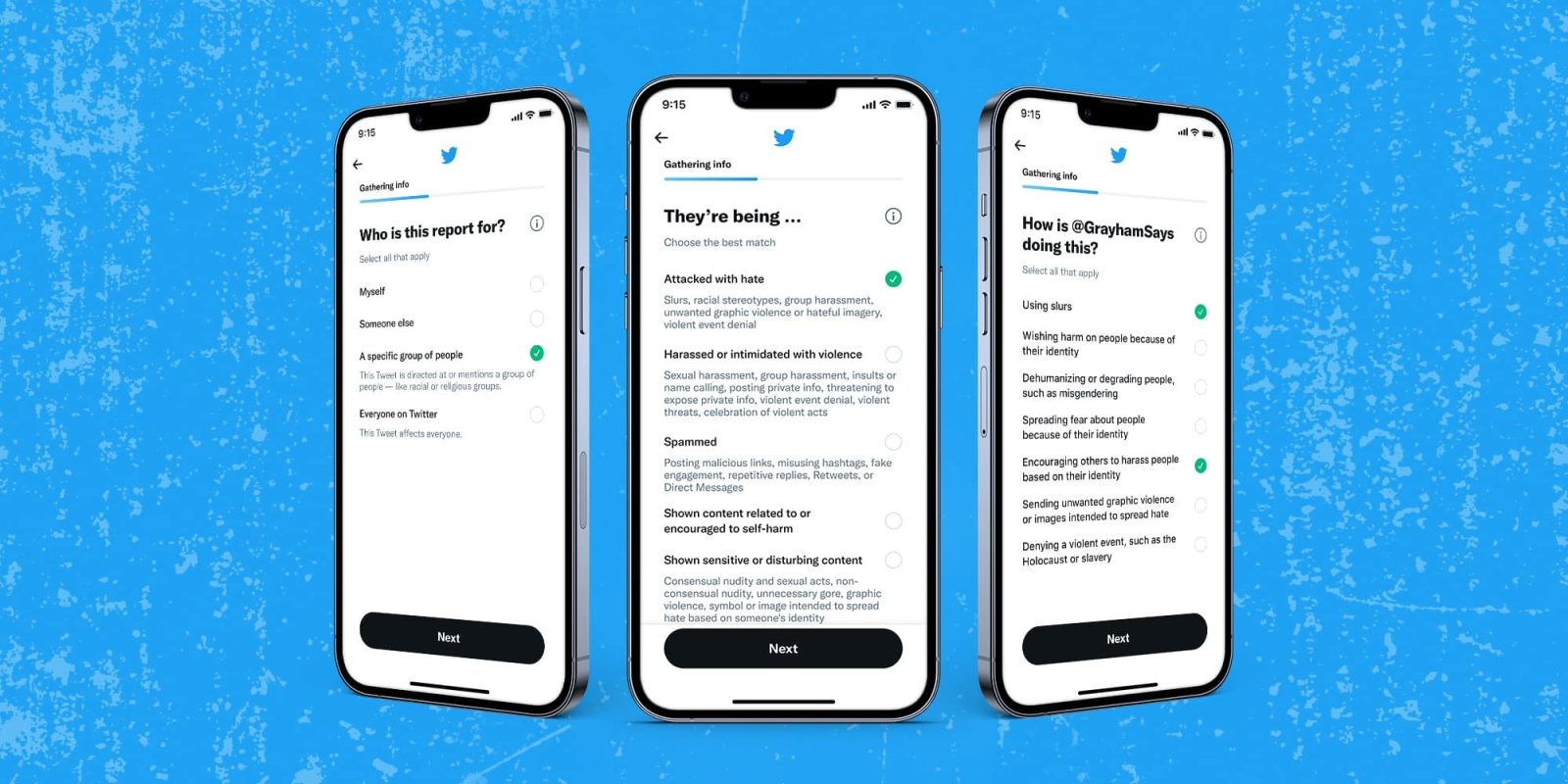
Reporting Twitter abuse used to be a somewhat torturous process, as it required you to figure out the specific rule they had broken before you could even tell Twitter what had happened. Fortunately, that’s no longer the case …
Back in December, the company started trialling a new approach, which it called a ‘human-first’ user interface. The Verge reports that this is now rolling out to most countries, in both iOS and Android apps, and on the web.
Twitter found that it increased reports by 50%, explaining here why the change was needed.
If you’ve ever reported a Tweet, you may have been frustrated by this process, which is a typical one online. First, you report an item, then a list of violations pops up — which one is it? Is it suspicious? Abusive? Both? You tick one of the boxes.
Twitter receives millions of reports; everything from misinformation and spam, to harassment and hate speech, it’s their way of telling Twitter, hey this isn’t right or I don’t feel safe. Based on user feedback, research, and an understanding that today’s reporting process wasn’t making enough people feel safe or heard, the company decided to do something about it.
Twitter said that reporting Twitter abuse now simply requires you to say what the problem is, and Twitter figures out which rule has been broken.
It lifts the burden from the individual to be the one who has to interpret the violation at hand. Instead it asks them what happened.
This method is called symptoms-first, where Twitter first asks the person what’s going on. Here’s the analogy the team uses: say you’re in the midst of an emergency medical situation. If you break your leg, the doctor doesn’t say, is your leg broken? They say, where does it hurt? The idea is, first let’s try to find out what’s happening instead of asking you to diagnose the issue.
“In moments of urgency, people need to be heard and feel supported. Asking them to open the medical dictionary and saying, ‘point to the one thing that’s your problem’ is something people aren’t going to do,” said Brian Waismeyer, a data scientist on the health user experience team that spearheaded this new process. “If they’re walking in to get help, what they’re going to do well is describe what is happening to them in the moment.”
The company says that not all problematic tweets technically break a rule – but rather bend it. With this problem-first approach, Twitter found that reporting Twitter abuse becomes more accessible.
The vast majority of what people are reporting on fall within a much larger gray spectrum that don’t meet the specific criteria of Twitter violations, but they’re still reporting what they are experiencing as deeply problematic and highly upsetting […]
At every stage of Twitter’s research and design process, the team intentionally included people from marginalized communities — women, people of color, and people from the LGBTQ+ community, including those who identify as trans or nonbinary. The theory is, if you design for the outliers, you actually solve for the majority. In this case, Twitter designed with them in mind because they also happen to be some of the platform’s most engaged users.
“We really got to empathize and learn what their experiences were when filling out a report,” said Gomez. “Those insights were important for our cross-functional teams to understand what they’re experiencing.”
FTC: We use income earning auto affiliate links. More.




Comments